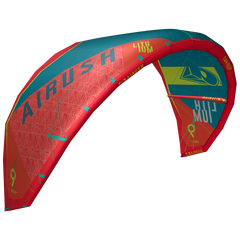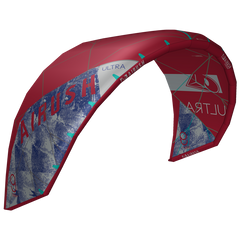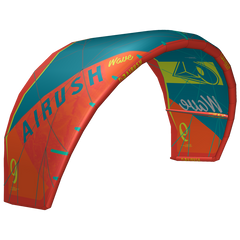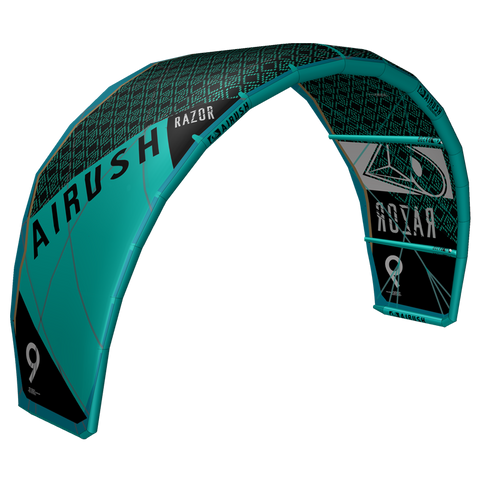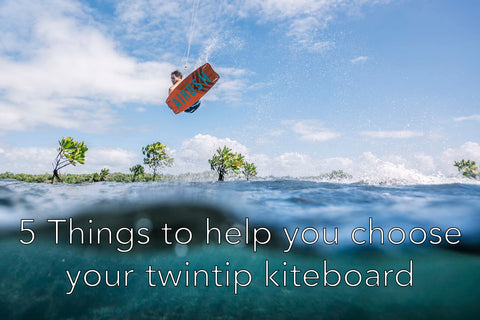
Common questions when choosing your first kitesurfing kite
How to choose your first kitesurfing kite?
Just finished your kite lessons and what now?
Alex Pastor Kite Club team is going to help you through the first steps when choosing your kite. We have gathered a lot of knowledge during the years working with Airush Kiteboarding and would like to share it with our readers.
So these are the most common questions that we get, about choosing kites:
Rent or buy kite equipment?
Renting kitesurf equipment can be a good way to start your kitesurfing career, and can have benefits like:
- You can test different kitesurf gear, different brands and choose what’s best for you.
- Easier to travel, you can always rent the material at the spot where you’ll kite.
Also there are some risks that you should consider, you will be responsible for the equipment you rent, so if you accidentally damage the rental equipment you’ll have to pay for it.
If you’re one week per year kitesurfer maybe it’s a good idea to rent, but if you are already hooked on kiteboarding, you’re close to kite spot and planning to kite a lot, then you should consider buying your own kite gear.
We would highly suggest buying your own kite gear because:
- Cheaper in the long run. Two weeks of rent could cost you a kite.
- You can practice everyday, you’re in control.
- Easier to progress with your own quiver.
So if you decided to buy your own kitesurf equipment, now the question is...
New or second hand kite gear?
New Kitesurf Equipment
Will always be more expensive to start with, it can cost around 1000-1500€ just one kite. So the question is, can you afford it?
If yes, then maybe you could consider going for the new equipment. The main benefit is that you’ll know that the kite will be without any problems, and if there are some manufacturing defects, you have the brand warranty that will cover the case.
It’s a good idea to buy new discounted kitesurfing gear from previous years, as it will be way cheaper, usually with 30-50% discounts. The best time to search for these amazing kitesurf deals is from September/ October when brands introduce the new gear.
Second hand kitesurf equipment
Will be more friendly to your pocket, you can snatch second hand deals after the season has finished or just starting, when people, kite schools and kitesurf shops are looking to renew their kitesurfing gear.
Sometimes the year might not matter, there could be an old kite but not used at all, on the other hand there could be a kite from previous year but completely trashed and with loads of repairs.
Our recommendation is to buy a kite in good condition even if the kite is few years old, because in the beginning of your kitesurfing career, you might smash the kite and therefore break it. You can miss some good sessions because the used kite was leaking or was broken. Also it can be dangerous, because you never know when the line or kite could break and could put yourself or others in danger.
We don’t suggest going older than 2011, because the technology and the safety systems were less safe and even some kite models were not working properly. And in most cases the kites will be used a lot.
How to check if the second hand kite is in good condition:
Canopy: First you would like to check if the canopy is “crispy”, meaning that the material is still in good condition and will be durable for upcoming use. If the material has stress/stretch marks and colour looks faded, it means it had some use and has a bigger chance of breaking. You can place the canopy in front of the sun or light and see if the kite has any small cuts or pinholes, also inspect the canopy close to the struts and leading edge as it a common place where cuts are not seen.
Leading edge: Inspect the leading edge if it has any cuts or scratches, if you can see the bladder through the cut/scratch you need to repair it immediately.
Leaks: The best way is to pump up the kite as hard as possible and leave it at least for few hours, the best is overnight, make sure you close the valve tight.
Repairs: If the kite has any big repairs, it must be professionally done. Also repaired kites will be cheaper.
Pigtails/bridles/pulleys: Inspect them for any possible damage, if they’re quite chafed it means that the kite has been used a lot. Make sure the pulleys (if there are any) are moving freely.
Kite size
To choose your kite size you need to consider 3 important things:
Your weight: The size of the kite will differ according how much you weight. Person that’s quite heavy (+-100kg) would like to get bigger kites, whereas a rider that weighs 50kg will need smaller size kites for the same conditions. Most of the brands have a kite size chart of weight x wind strength x kite size, that could be a good starting point. We highly suggest to ask experts in kite shops where you buy your kites, to give you the best solution, taken all 3 factors in consideration.
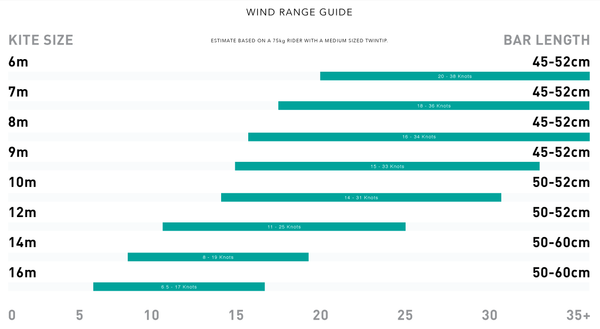
Kite Size Chart
Spot where you will ride: You can check your spot trends/historical statistics here: https://www.windguru.cz/archive-stats.php
For example in Tarifa we have quite strong levante, so it’s a good idea to have a small kite like 5-7m. If the spot where you ride tends to have lighter wind, then you want to get bigger kites like 14m or bigger. Always the best is to ask locals, as they can tell you any specific spot characteristics, e.g seabreeze and etc, that windguru or other wind forecast cannot tell.
Your board size: The formula is simple.
Bigger kite board - smaller kite.
Smaller board - bigger kite.
If you don’t know what board do you need or how to choose one, you can read it here: 5 Things to help you choose your twintip kiteboard
Can I have one kite for all conditions?
Nope. Although in certain spots you can cover most of the days with one kite, but if the wind picks up or you have lighter wind days, then it would not work. A typical kite quiver consists of 2-3 kites, generally 7,9,12m, that covers most of the wind strengths, but as we said previously it depends on other factors like your weight and board size.
Shape of the kite
When you buying your first kitesurfing kite you want have the kite characteristics such as easy water relaunch, good upwind capability and big wind range, these aspects will help you to progress easier and make your sessions more enjoyable. These characteristics are found mostly on delta and bow shape kites, which we will talk about below.
There are 4 types of kites:
Delta Kites
Delta Kites are the best choice for your first kite. Their shape is perfect for a very easy relaunch for those that aren’t that experienced and they’ll be crashing their kite a few times every day. You just need to pull one side of the bar for a few seconds and the kite will automatically lift from the water. Also the delta kites are slower than usual which makes them more stable in the air and more forgiving on mistakes. Because of the bridle system delta shape kites has a big wind range, so it works well in light wind and it absorbs the gusts pretty well. Our best delta kite recommendation will be the Airush Lithium, it has won several magazines kite tests and is the favorite of all our students that are buying their first kite.
Best for: Freeride and beginners/progression.
Bow Kites
It was one of the most popular kite shape that was introduced in early days of kitesurfing. The bow shape has superb upwind capabilities, big wind range and is easily depowered, because of the bridle/pulley system. The shape gives you really good lift and hang time. It’s also good choice for your first kitesurfing kite, as it has good characteristics that make your progression easier. If you're looking for bow kites you'll generally only find old kites, as new kite styles are more specific and they will be classified as something else like you can see next: Lightwind, Big air Kites.
Lightwind Kites
A lightwind kite is very useful if you're looking to ride when the wind conditions are very light and other kites won't even fly properly, foiling from 5 knots or riding a twintip or directional board from about 10 knots. The best things about kites made for lightwind such as the Airush Ultra is that they have only one strut, so then they are very light and they don't fall out of the sky or back stall where other kites would. Another great thing about this type of kite, is that it has a lot of drift, so if you are kite surfing on onshore winds, the kite will stay a lot longer in the air and won't fall so easy when you're going down a wave. If the wind is gusty, the same thing happens, when the gust goes down, the kite stays up nicely.
Best for: Foil, Lightwind, Kite Surf onshore conditions.
Big air Kites
If you want a kite specifically for staying a long time in the air, this is what you will be looking for. Big air kites are something relatively new and they are just arriving to the market. They generally have high aspect ratio, which means their proportions are a bit longer and thinner than other kites. These specific proportions are making it possible for the kite to jump higher as when you bring the bar down on a jump, they are able to catch more wind than any other types of kites. Our best kite for big air is the Airush Lift.
Best for: Big air strapless, big jumps with twintip
Hybrid Kites (Open C Shape)
As the name states it’s a combination of bow and c-kites, it uses the best characteristics of both worlds and therefore can deliver an ultimate all-round kite experience. These kites typically will have a bigger toolbox that you can use. To use the kite to its full potential you will have to involve yourself more in the control of the kite. This could be a perfect second kite when you already have good kite control and want to progress into big air, wave riding or just simply cruise around with more possibilities.
Best for: Freeride, wave, big air, megaloops, freestyle. A bit of everything.
C-Kites
They offer very good stability and lift while doing unhooked tricks, so these characteristics will only be useful for advanced riders that focuses on freestyle. While the price tag for second hand c kite can be very attractive, don’t get lured, because it will make your progression way harder.
Best for: Unhooked freestyle and wakestyle/ megaloops
How to take care of your kite
Don’t leave inflated kite in the sun or strong wind for a long period of time, when not in use. If you don’t want to pack it up, make sure you put sand on the canopy so that it doesn’t flap.
Especially in summer, don’t leave the kite on direct sunlight or in a really hot place (e.g trunk of the car), because high temperature are not good for your kites, especially for the valves as they can unglue and create leaks.
Very important thing is to dry the kite completely and don't leave it wet after the kite session. If there is no other choice and you have to pack the kite gear wet, make sure to dry the kite equipment when you come back home.
If you’re using the kite quite often then you don’t need to clean your kite with fresh water, but if you want to increase the lifespan of the material then occasionally you can rinse the salt/dirt with clean water. The most important thing is to dry the kite completely after cleaning.
Like this how to choose your kitesurfing kite guide?
Why not to check our other kitesurfing guides
Comments
Hello,
I will be in TArifa this summer a number of weeks and most likely this year will buy used equiptment or rent . Do you have a timetable for renting say 3 weeks non consecutive days and what is the cost? I see some schools do this so I am asking around to find the best deal.
Thank you.
Carolyn
Hola , entiendo que haya diferentes tipos de vela pero en las fotos no se aprecia su diferencia , su forma es diferente ? Saludos … muy buena la info



